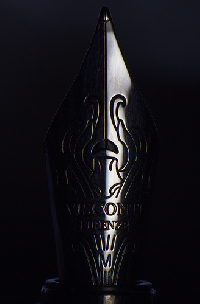
How to clean a fountain pen so that it writes smoothly and lasts forever
Most fountain pens include these three basic components: nib, feed, and variable ink supply. Most people tend to underestimate the amount of care needed in order to keep the writing implement in tip-top shape.
So, how to clean a fountain pen, you ask, when there’s enough dried ink and dirt to impede flow? Read on to find out!
Well, first things first.
For those unfamiliar with the inner — and outer — workings of the fountain pen, here’s a quick rundown of components:
- Nib: The nib is the decorative writing tip, also known as the point. It’s available in a variety of materials, such as stainless steel, rhodium gold, or other such fine looking finishes/materials.
- Feed: This is a ribbed part which is attached to the back of the nib and literally “feeds” ink from the reservoir to the nib tip.
- Ink supply/reservoir: A variety of different filling mechanisms can be used, like the cartridge, piston, plunger, converter, sac, and vacuum.
When Do I Clean?
After every second filling from either a cartridge or bottle, it should be cleaned. So, this means that before the installation of a third cartridge — or a third filling from an ink bottle — your pen should be cleaned.
So, how to clean a fountain pen properly? Well, let’s start with the fact that you’ll always want to use cool/cold water to do the job. This is because hot water can — and, in many instances, will — damage the feed. So, remember: never use hot water during the process. Stick to cool water!
General Guidelines
Some other helpful tips from professionals within the industry are:
- For excessive build-up of dirt/grime/ink, be sure to soak the nib section overnight in a combined solution of 1 teaspoon ammonia and water.
- Use Windex — or other similar cleaner which contains ammonia — in order to break down dry ink and/or dirt within the components.
- Flush the nib section with water; the faucet’s flow and power will normally be enough to break free unwanted parts clinging to the interior. An ear syringe also works wonders, as well, in order to flush out all the unwanted dirt, grime, and ink from the nib section.
- Use a soft, dry cloth and shake the nib section to remove any and all excess water from it. Night — before bed — is the best time to do this as the pen will be able to sit throughout the night and dry successfully.
- Remember to store your pen with the nib tip pointed upward; never keep your fountain pen lying down as the ink has a tendency to coagulate and dry. This will impede flow in a negative way.
Methods for Different Materials/Finishes
Like most things in life, these pens are made from a variety of different materials and come in a multitude of different finishes. Thus, care may differ from product to product. Here are a few quick ideas for each specific material:
- Sterling, silver, and plated: Use a store-bought polishing cloth, according to pen pros. It’s good to remember that silver is a soft metal and will show scratches, so use extra caution.
- Hard metals: These are more durable than Sterling or silverplate so a soft cloth should be all that is necessary to keep these finishes crystal clear.
- Lacquers: Use soft cloths, as well. Do not use cleaners which contain potentially abrasive chemical compounds on these lacquers, either.
- Celluloids: Use a soft cloth for the exterior as Celluloids are quite durable.
- Fine resins: Like most of the previously mentioned materials above, use a soft cloth for dirt, grime, and fingerprint smudges. As well, invest in a leather pen case in order to keep it safe from dings, scratches, and dents.

